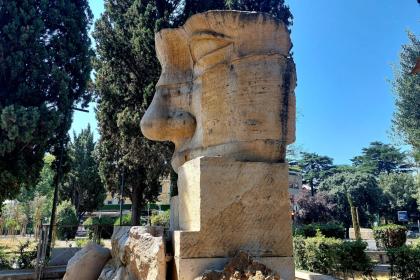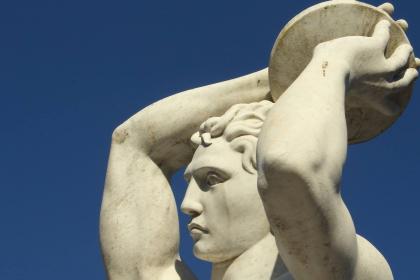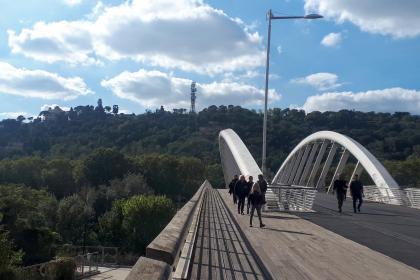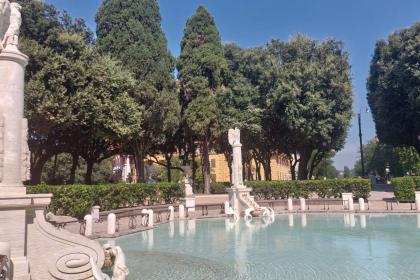
Location
A modern Roman icon in a modern neighborhood
This elegant and quiet neighborhood has small villas and palaces built between the 1920s and 1930s alternating with more modern buildings and works from the post-World War II period to the present day. Among its wide tree-lined avenues leading down to the Tiber, embellished with decorative and street furniture elements such as the fountain in the gardens of Piazza Mazzini, there is a bronze horse. It is a sculpture of great beauty that harkens back to the great classical and Renaissance tradition. Who lives in Rome considers it a staple of the Della Vittoria neighborhood but also, of course, the main and most popular symbol of RAI, the public broadcasting company.
From Bolivia to Viale Mazzini
The horse is nearly five meter tall, sculpted in a classic battle pose, and has been guarding the gardens in front of RAI’s historic headquarters on Viale Mazzini since 5 November 1966. The building itself is a steel and glass building designed a few years earlier by Francesco Berarducci, a pupil of the famous designer Pier Luigi Nervi (to whom we owe masterpieces such as the Palazzetto and the Palazzo dello Sport). The sculpture is the work of Francesco Messina, the author of some of Italy’s greatest 20th-century monuments, and was originally intended for a commemorative monument dedicated to Simòn Bolìvar, the Venezuelan leader, politician and hero who between 1810 and 1830 was the principal architect of the independence of many Latin American countries, including Bolivia, named in honor of its liberator. However, high implementation costs and Bolivia’s economic conditions had sank the project.
A prancing, dying or wounded horse?
Struck by the beauty of the project that remained in its embryonic state, then RAI deputy director general Marcello Bernardi commissioned the Sicilian sculptor to bring part of it to fruition, creating a prancing horse to be installed in the gardens in front of the offices on Viale Mazzini, where we can still admire it today. With its hind legs bent to the ground, the horse points its front legs to the ground and turns its muzzle to the sky, open to a silent neighing. Also because of its characteristics, the sculpture is usually called the “Dying Horse”, a designation adopted by the press and the general public since the 1970s after a journalist reported pollution damage to the sculpture. About the horse’s ultimate fate, even in its sculptor’s intentions, however, there is no certainty. While making it in the Battaglia Foundry in Milan, Francesco Messina described it as “a wounded horse as after a fight”, perhaps therefore ready to get up and fight again.
Modern and contemporary Rome: more places not to miss in the Della Vittoria neighborhood
The fountain-ninfeo in Piazza Mazzini and Igor Mitoraj’s Goddess Roma, the monumental fountain created in 2003 by the famous Polish sculptor, are just two examples of the places worth visiting in a neighborhood still little frequented by large-scale tourism, made enchanting in spring by the flowering linden trees and in autumn by the Ginko Biloba trees. Public and private buildings testify to the evolution of Roman architecture over the course of a century, from the Roman barocchetto to Fascist rationalism (the Foro Italico complex is an example thereof) and the modernism of the 1960s, arriving up to the present day with the Ponte della Musica. Also a short distance from Viale Mazzini is Casa Balla, a universe of light, color, form and movement periodically opened to the public by the MAXXI Museum, and the last residence of writer Alberto Moravia. Absolutely not to be missed are the courtyards and gardens of the residential buildings of the 1920s and 1930s, enchanting green microcosms almost never visible from the outside.
Goddess Roma by Igor Mitoraj

The Foro Italico Complex

 Condividi
Condividi
The Music Bridge - Armando Trovajoli

 Condividi
Condividi
Fountain in Piazza Mazzini

 Condividi
Condividi











































